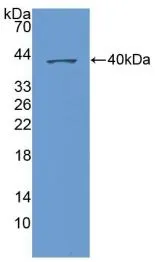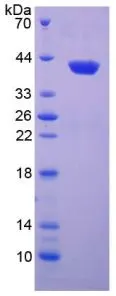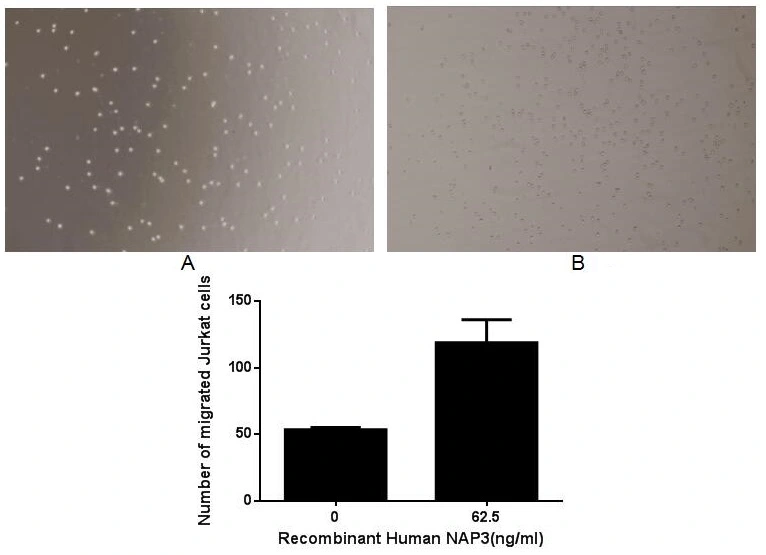
WB analysis of GTX00215-pro Human CXCL1 / GRO alpha protein (active).
Human CXCL1 / GRO alpha protein, His and GST tag (active)
GTX00215-PRO
ApplicationsFunctional Assay
Product group Proteins / Signaling Molecules
Protein IDP09341
Overview
- SupplierGeneTex
- Product NameHuman CXCL1 / GRO alpha protein, His and GST tag (active)
- Delivery Days Customer9
- Application Supplier NoteNeutrophil-activating protein 3 (NAP3) also known as chemokine (C-X-C motif) ligand 1 (CXCL1) is a small cytokine belonging to the CXC chemokine family. NAP3 is expressed by macrophages, neutrophils and epithelial cells, and has neutrophil chemoattractant activity. Thus, chemotaxis assay used 24-well microchemotaxis system was undertaken to detect the chemotactic effect of NAP3 on the human monocytic cell line THP-1. Briefly, THP-1 cells were seeded into the upper chambers (100 microl cell suspension, 1x106 cells/ml in RPMI-1640 with FBS free) and SLC (31. 25 ng/ml, 62. 5 ng/ml, 125 ng/ml and 250 ng/ml diluted separately in serum free RPMI-1640) was added in lower chamber with a polycarbonate filter (8microm pore size) used to separate the two compartments. After incubation at 37C with 5% CO2 for 1h, the filter was removed, then cells in low chamber were observed by inverted microscope at low magnification (x100) and the number of migrated cells were counted at high magnification (x400) randomly. And NAP3 is able to induce migration of THP-1 cells.
- ApplicationsFunctional Assay
- CertificationResearch Use Only
- ConjugateUnconjugated
- Protein IDP09341
- Protein NameGrowth-regulated alpha protein
- Scientific DescriptionThis antimicrobial gene encodes a member of the CXC subfamily of chemokines. The encoded protein is a secreted growth factor that signals through the G-protein coupled receptor, CXC receptor 2. This protein plays a role in inflammation and as a chemoattractant for neutrophils. Aberrant expression of this protein is associated with the growth and progression of certain tumors. A naturally occurring processed form of this protein has increased chemotactic activity. Alternate splicing results in coding and non-coding variants of this gene. A pseudogene of this gene is found on chromosome 4. [provided by RefSeq, Sep 2014]
- Storage Instruction-20°C or -80°C,2°C to 8°C
- UNSPSC12352202





